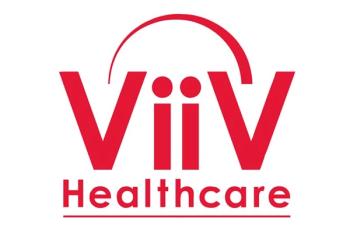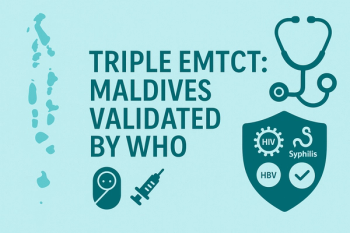
- June 2018
- Volume 3
- Issue 3
Implants for Delivery of Antiretroviral Drugs for HIV Pre-Exposure Prophylaxis
Implants are promising for long-term, sustained, and reversible delivery of ARV drugs that may bypass adherence challenges for end users.
Strategies to reduce new HIV infections span multifaceted efforts, including safe-sex counseling, voluntary medical male circumcision, treatment as prevention, and pre- (PrEP) and postexposure prophylaxis. PrEP entails the use of antiretroviral (ARV) drugs prophylactically by HIV-negative individuals at risk of infection to thwart acquisition of the virus.
In 2012, the US Food and Drug Administration (FDA) approved Truvada, a daily oral pill for PrEP comprising 2 reverse tran­scriptase inhibitors, tenofovir disoproxil fumarate (TDF) and emtricitabine (FTC). This landmark approval was followed by approval from several other countries in North America and South America, Europe, and Africa. Support for oral PrEP emerged through pivotal randomized controlled trials inves­tigating Truvada in men who have sex with men (MSM),1-3 serodiscordant heterosexual couples in Kenya and Uganda,4 heterosexual men and women in Botswana,5 and users of injec­tion drugs in Thailand.6 The 2015 guidelines from the World Health Organization recommend oral PrEP for all populations at significant risk of HIV infection.7
ONE APPROACH DOESN’T FIT ALL
Clinical findings for oral PrEP in healthy participants demonstrated efficacy but also illuminated the impor­tance of user adherence for protection. For example, the first randomized controlled trial for PrEP (iPrEx, daily oral TDF and FTC in MSM) showed a 44% reduction in HIV acquisition but protection as high as 92% in the subset of individuals with detectable levels of tenofovir in the plasma.8 Importantly, oral PrEP is particularly unforgiving for women, with over 5 doses per week required to confer protection from vaginal exposure. As the FEM-PrEP9 and the VOICE10 clinical trials underscored, inconsistent use (or low adherence)11,12 of daily oral and vaginal ARV-based preven­tion products among the participating women resulted in no protection against HIV. Research about product preference in hypothetical settings or with actual products has shown that no single product is appealing across different groups of women and that a diversification of drug delivery forms is needed to optimize prevention coverage.13-15 Because PrEP is an elective tactic for HIV prevention, the ability of an individual to select a product that suits his or her lifestyle from an array of options may enhance the like­lihood of adherence.
Efforts to develop alternative PrEP delivery systems have leveraged existing technologies, particularly with the plethora of products available for contraception. Strategies for PrEP include approved oral pills and topical delivery forms, such as vaginal rings, that are currently in the regulatory approval process.16 Long-acting inject­ables, comprising the nanosuspension formulation of cabotegravir that requires dosing every 2 months, are in phase 3 clinical trials for HIV-uninfected women, MSM, and transgender women.17,18 Implants for HIV PrEP are in preclinical and early clinical studies, with a first-in-human trial planned to evaluate a subdermal implant containing tenofovir alafenamide (TAF) in South African women.19
THE PREP IMPLANT: GENERAL FEATURES
Long-acting implants for PrEP are currently under development and mimic many aspects of contraceptive implants currently on the market (eg, Nexplanon and Jadelle). The PrEP implants are designed for placement under the skin, where the device resides and releases the ARV drug at a controlled rate over time. A subdermal implant can assist individuals seeking discretion when stigmatized for accessing oral PrEP or when unable to negotiate safe sex—a challenge of particular salience to young women and girls in high-incidence regions.20 Similar to long-acting injectable nanosuspensions, the long-acting delivery of ARV drugs from an implant supports user independence by eliminating the need for adherence to regimens of daily pills or on-demand products. However, unlike long-acting injectables, implants are retrievable throughout the duration of drug delivery, a critical feature in cases of adverse reaction or desire for discontinuation. Additionally, implants offer an improved, sustained pharmacokinetic profile compared with pills. Subdermal delivery of an HIV PrEP implant will likely use a trocar approach similar to that of contraceptive implants, which may require local capacity building and training for providers to support product implementation.
CURRENT DEVELOPMENT OF HIV PREP IMPLANTS
Research is still underway to fully develop this drug delivery system. Several research groups, funded through government sources (eg, the United States Agency for International Development and the National Institutes of Health) and private sources (eg, the Bill and Melinda Gates Foundation), are advancing distinct implant designs with a combination of different configu­rations, classes of ARV drugs, and product profiles.21 RTI International, a nonprofit research institute, in collab­oration with academic partners, is developing a long-acting implant with zero-order delivery kinetics that can be inserted with existing contraceptive trocars.22,23 The implant, which comprises the FDA-approved poly­caprolactone material, is biodegradable but otherwise remains retrievable during the drug delivery phase (see Feature image). It is currently in preclinical studies and has demonstrated sustained release of the ARV drug up to 3 months in the rabbit animal model.24 RTI International’s biodegradable implant is a versatile platform design applicable for alternative indications, such as the release of hormone contraceptives25 and as a multipurpose prevention technology (MPT).23 The Oak Crest Institute of Science is developing a match­stick-sized silicone device that houses TAF. Release of TAF through orthogonal channels coated with polyvinyl alcohol enabled sustained zero-order kinetics of TAF from in vitro assays and safety and pharmacokinetics in beagles over 35 days.26 Northwestern University is also leading a program to develop implantable PrEP systems, including a reservoir-style implant to deliver TAF and/or cabotegravir.27
Also ongoing is the development of nonpolymeric implants, such as a refillable silicon-based nanochannel device at Houston Methodist that contains TAF and FTC. Results of preclinical studies of the refillable implant in rhesus macaques showed sustained levels of teno­fovir diphosphate in peripheral blood mononuclear cells (PBMCs) over 83 days and FTC-triphosphate levels in PBMCs for 28 days.28 Intarcia Therapeutics, a company based in Boston, Massachusetts, is presently expanding the utility of its osmotic pump implant for patients with diabetes to include a new implant for PrEP.29
OUTLOOK FOR PREP IMPLANTS
The pursuit of effective implants that are accept­able by users and providers, especially in resource constraint settings, is currently underway. It is part of an expanding prevention toolbox aimed at providing “lifestyle-compatible” options for HIV PrEP. The devel­opmental phase for the implant must remain techni­cally nimble to accommodate new ARVs in the pipeline while also meeting requirements for efficacious dosing and desired durations. Although investigators are lever­aging innovations from other market-available implants, delivery of ARV drugs requires new considerations, particularly when designing long-term drug release at doses that are likely an order of magnitude higher than for other indications (eg, hormonal contracep­tives). Moreover, critical questions must be addressed for the implant, including safety and the efficacious dosing of ARV drugs from the subdermal space, user acceptability and social adoption, and implemen­tation and roll-out strategies for targeted populations. Despite these critical questions, the promise of an effective and well-tolerated long-acting reversible PrEP system stands. The ability to combine multiple drugs within a single implant is also being evaluated for MPTs and could also hold utility for treatment indications such as antiretroviral therapy. Ideally, the future of HIV PrEP will entail widespread availability of different products to afford individuals the choice to protect themselves against HIV in a manner conducive to lifestyle, circumstances, and perceived risk factors. Continued advancements in drug delivery systems and potent ARVs, combined with effective implementation strategies to provide access to those at risk, instill the promise of hope to combat this epidemic.
Dr. van der Straten is a senior fellow and the director of the Women’s Global Health Imperative Program at RTI International and a professor of medicine at University of California, San Francisco.
Dr. Johnson is a research chemist at RTI International, where she currently leads a team in the development of drug delivery systems with a focus on HIV prevention.
References
- Grant RM, Lama JR, Anderson PL, et al. Preexposure chemoprophylaxis for HIV prevention in men who have sex with men. N Engl J Med. 2010;363(27):2587-2599. doi: 10.1056/NEJMoa1011205.
- Molina J-M, Capitant C, Spire B, et al. On-demand preexposure prophylaxis in men at high risk for HIV-1 infection. N Engl J Med. 2015;373(23):2237-2246. doi: 10.1056/NEJMoa1506273.
- McCormack S, Dunn DT, Desai M, et al. Pre-exposure prophylaxis to prevent the acquisition of HIV-1 infection (PROUD): effectiveness results from the pilot phase of a pragmatic open-label randomised trial. Lancet. 2016;387(10013):53-60. doi: 10.1016/S0140-6736(15)00056-2.
- Baeten JM, Donnell D, Ndase P, et al. Antiretroviral prophylaxis for HIV prevention in heterosexual men and women. N Engl J Med. 2012;367(5):399-410. doi: 10.1056/NEJMoa1108524.
- Thigpen MC, Kebaabetswe PM, Paxton LA, et al. Antiretroviral preexposure prophylaxis for heterosexual HIV Transmission in Botswana. N Engl J Med. 2012;367(5):423-434. doi: 10.1056/NEJMoa1110711.
- Choopanya K, Martin M, Suntharasamai P, et al. Antiretroviral prophylaxis for HIV infection in injecting drug users in Bangkok, Thailand (the Bangkok Tenofovir Study): a randomised, double-blind, placebo-controlled phase 3 trial. Lancet. 2013;381(9883):2083-2090. doi: 10.1016/S0140-6736(13)61127-7.
- World Health Organization. Guideline on when to start antiretroviral therapy and on pre-exposure prophylaxis for HIV. Geneva 2015.
- Anderson PL, Glidden DV, Liu A, et al; iPrEx Study Team. Emtricitabine-tenofovir concentrations and pre-exposure prophylaxis efficacy in men who have sex with men. Sci Transl Med. 2012;4(151):151ra125.
- Van Damme L, Corneli A, Ahmed K, et al. Preexposure prophylaxis for HIV infection among African women. N Engl J Med. 2012;367(5):411-422. doi: 10.1056/NEJMoa1202614.
- Marrazzo JM, Ramjee G, Richardson BA, et al. Tenofovir-based preexposure prophylaxis for HIV infection among African women. N Engl J Med. 2015;372(6):509-518. doi: 10.1056/NEJMoa1402269.
- Van Der Straten A, Montgomery ET, Musara P, et al. Disclosure of pharmacokinetic drug results to understand nonadherence: results from a qualitative study. AIDS. 2015;29(16):2161-2171. doi: 10.1097/QAD.0000000000000801.
- Corneli A, Perry, B, McKenna, K, et al. Participants’ explanations for nonadherence in the FEM-PrEP clinical trial. J Acquir Immune Defic Syndr. 2016;71(4):452-461. doi: 10.1097/QAI.0000000000000880.
- Quaife M, Eakle R, Escobar MAC, et al. Divergent preferences for HIV prevention: a discrete choice experiment for multipurpose HIV prevention products in South Africa. Med Decis Making. 2018;38(1):120-133. doi: 10.1177/0272989X17729376.
- Minnis AM, Roberts, ST, Agot, K, et al; TRIO Study Team. Young women’s ratings of three placebo multipurpose prevention technologies for HIV and pregnancy prevention in a randomized, crossover study in Kenya and South Africa [published online March 20, 2018]. AIDS Behav. 2018;in press.
- Luecke EH, Cheng H, Woeber K, Nakyanzi T, Mudekunye-Mahaka IC, van der Straten A; MTN-003D Study Team. Stated product formulation preferences for HIV pre-exposure prophylaxis among women in the VOICE-D (MTN-003D) study. J Int AIDS Soc. 2016;19(1):20875. doi: 10.7448/IAS.19.1.20875.
- IPM’s Application for Dapivirine Vaginal Ring for Reducing HIV Risk in Women Now Under Review by European Medicines Agency. In: Microbicides IPf, ed2017.
- A Phase 3 Double Blind Safety and Efficacy Study of Long-Acting Injectable Cabotegravir Compared to Daily Oral TDF/FTC for Pre-Exposure Prophylaxis in HIV-Uninfected Women. 2017; hptn.org/research/studies/hptn084.
- A Phase 2b/3 Double Blind Safety and Efficacy Study of Injectable Cabotegravir Compared to Daily Oral Tenofovir Disoproxil Fumarate/Emtricitabine (TDF/FTC), for Pre-Exposure Prophylaxis in HIV-Uninfected Cisgender Men and Transgender Women who have Sex with Men. 2017; https://www.hptn.org/research/studies/hptn083.
- A randomised controlled trial to assess the safety, acceptability and pharmacokinetics of a sustained-release tenofovir-alafenamide sub-dermal implant for HIV prevention in women. http://www.edctp.org/stratic-actions-supporting-large-scale-clinical-trials/.
- Harper GW, Riplinger AJ, Neubauer LC, Murphy AG, Velcoff J, Bangi AK. Ecological factors influencing HIV sexual risk and resilience among young people in rural Kenya: implications for prevention. Health Educ Res. 2014;29(1):131-146. doi: 10.1093/her/cyt081.
- Lykins WR, Luecke E, Johengen D, van der Straten A, Desai TA. Long acting systemic HIV pre-exposure prophylaxis: an examination of the field. Drug Deliv Transl Res. 2017;7(6):805-816. doi: 10.1007/s13346-017-0391-6.
- Long-Acting Implantable HIV Prevention. Exploring an innovative method for arresting the global HIV pandemic [press release]. RTI International 2017.
- New multipurpose device to help prevent HIV and pregnancy [press release]. RTI International 2017.
- Gatto G, Girouard, N, Brand, RM, et al. Pharmacokinetics of tenofovir alafenamide by subcutaneous implant for HIV PrEP. Paper presented at: Conference on Retroviruses and Opportunistic Infections; March 7, 2018; Boston, MA.
- Darney PD, Monroe SE, Klaisle CM, Alvarado A. Clinical evaluation of the Capronor contraceptive implant: Preliminary report. Am J Obstet Gynecol. 1989;160(5, part 2):1292-1295.
- Gunawardana M, Remedios-Chan M, Miller CS, et al. Pharmacokinetics of long-acting tenofovir alafenamide (GS-7340) subdermal implant for HIV prophylaxis. Antimicrob Agents Chemother. 2015;59(7):3913-3919. doi: 10.1128/AAC.00656-15.
- Northwestern Receives $17 Million Grant for HIV Prevention Research [press release]. Northwestern Medicine News Center 2015.
- Chua CX, Jain, P, Hu, M, et al Transcutaneous refillable nanofluidic implant for constant delivery of HIV PrEP. Paper presented at: Conference on Retroviruses and Opportunistic Infections 2017.
- A New Collaboration for HIV Prevention 2017; https://www.intarcia.com/pipeline-technology/hiv-prevention.html. Accessed May 1, 2018.
Articles in this issue
over 7 years ago
Teamwork Makes the Dream Workover 7 years ago
Cutting the Drug Development Red Tapeover 7 years ago
It Takes Two to TANGO With a Carbapenemaseover 7 years ago
Flu Season 2017-2018: A Look at What Happened and What's to Comeover 7 years ago
Searching for the Cause of Hearing Loss in a Patient With HIVover 7 years ago
Diagnosis and Management of Gram-Negative Nosocomial InfectionsNewsletter
Stay ahead of emerging infectious disease threats with expert insights and breaking research. Subscribe now to get updates delivered straight to your inbox.

































































































































































































































































































